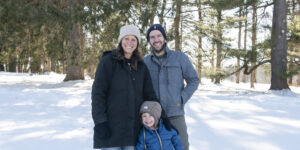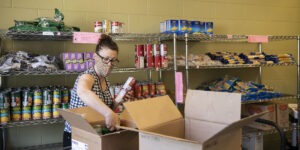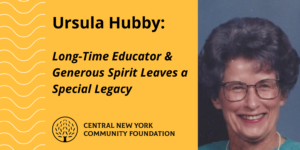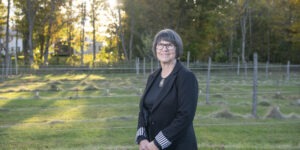The following policy paper outlines the Central New York Community Foundation’s view on what has been accomplished so far to end childhood lead poisoning in Syracuse and what still needs to be done to close a critical gap in legislation. Based on our analysis, we conclude that the most important next step is to advocate for the passage of a new lead ordinance, soon to be put forth by the City of Syracuse, which would make the presence of lead a housing code violation.
Written by Frank Ridzi, Ph.D., Vice President, Community Investment
Download as PDFIntroduction
The topic of lead poisoning has recently burst back into the scene in Central New York due to high-profile publicity and community action. This issue has, however, been an ongoing concern in this region, and across New York State, for decades. Childhood lead poisoning is a complex social problem that requires sustained vigilance. Recently, we have seen a steady march toward progress, as lead poisoning rates are gradually declining in Syracuse each year. In addition, increased resources have been devoted to the issue and new collaborations formed among local policy makers, residents and organizations. Syracuse has taken bold steps, but more needs to be done.
Based on our analysis, we conclude that the most important next step is to advocate for the passage of a new lead ordinance soon to be put forth by the City of Syracuse. Such an ordinance promises to close the critical gap between finding lead and making its presence a housing code violation. This new legislation will enable the already-established infrastructure for ticketing and code enforcement to be fully activated.
lead exposure in the spotlight
The problem of elevated blood lead levels in children has garnered increased attention in Syracuse over the past few years. Lead has been linked to a wide variety of harmful effects, especially if exposure occurs during the first few years of life—when young children are likely to be crawling through lead dust residue, putting their hands in their mouths, and climbing around high friction surfaces such as windows and doors where lead dust is continuously created. Elevated levels of lead in children have been found to cause developmental delays, learning difficulties and a host of other health complications that can make attentiveness in school and upward mobility difficult (Gump et. al., 2017; Lane et. al. , 2008).
Lead exposure is not just a local problem. Syracuse is merely a microcosm of a larger statewide problem. In 2016, New York State led the nation in the number of children with elevated blood lead levels (i.e., BLL over 5 μg/dL) (CDC, 2019) at 17,745, with New York City accounting for 5,610 (National Center for Healthy Housing 2018). This is largely because we have older homes, nearly 80 percent of which were built before 1978, than most other states (Curtis, 2019; National Center for Healthy Housing, 2018). In Syracuse, 95 percent of all housing units were built before 1980 (Pasquale and Tifft, 2019).
The use of lead in domestic paint was outlawed in 1978 when it was linked to a variety of health concerns and dubbed an environmental toxin. Since then, it has largely been remediated by being painted over due to the high cost of full remediation. While this Band-Aid approach can be a cost effective strategy (painting can cost about $5,000 per dwelling and full removal may stretch to upwards of $50,000), it means that this popular solution is more temporary than permanent. If maintenance and upkeep lapse, the paint once again begins to chip as the home ages, exposing young children to the harmful effects of lead.
a ‘wicked’ social program that requires vigilence
Lead exposure is what policy researchers refer to as a ‘wicked’ social problem. Such problems are extraordinarily difficult to solve because of their complexity. Simply understanding them can require a multi-disciplinary approach but this can lead to a lack in clarity as we discover that such problems are intertwined with other social issues such as poverty. This can result in uncertainty over what aspect to address first and disagreement among stakeholders about how best to take action (Rittel and Webber, 1973; Wahl, 2017).
Another key aspect of the wicked problem is that it is never completely solved (Rittel and Webber, 1973; Wahl, 2017). This seems to be true for lead, a substance that we have known to be toxic since the 1970s. Rather than being solved in the past, like many have assumed, it continues to resurface just as communities forget about it.
Lead was a key component in the fabrication or construction of so much of our housing stock that it is impractical to tear down entire sectors of the community. The high cost of repairs, paired with low home values and limited borrowing opportunities, makes it is simply too costly to be rid of it entirely. As a result, perhaps our best policy option is one of vigilance.
In this paper, we explore the recent steps that Syracuse and Onondaga County have taken to develop into a community that is truly vigilant about lead poisoning and as a result, one that never again will be surprised by lead exposure. Syracuse has made good progress but, we assert, in order to be truly lead-vigilant, there are additional steps that need to be taken. To understand the most prudent next steps, we must study the infrastructure that has already been built, examine how it fits together and identify where there are still gaps.
A Steady March Forward
Onondaga County, the City of Syracuse, elected city councilors, grassroots groups, local residents and a network of funders and housing service providers have embarked on a series of changes that promise to transform the way we deal with lead. To fully comprehend their coordination and potential shortcomings requires mapping. We present this in the form of a gear train – a series of gears that interact with each other to produce a coordinated effect.
In order to be proactive, there needs to be a system that prevents lead poisoning rather than responds to it. The city itself has taken several steps to put components into place that will help to make this a reality.
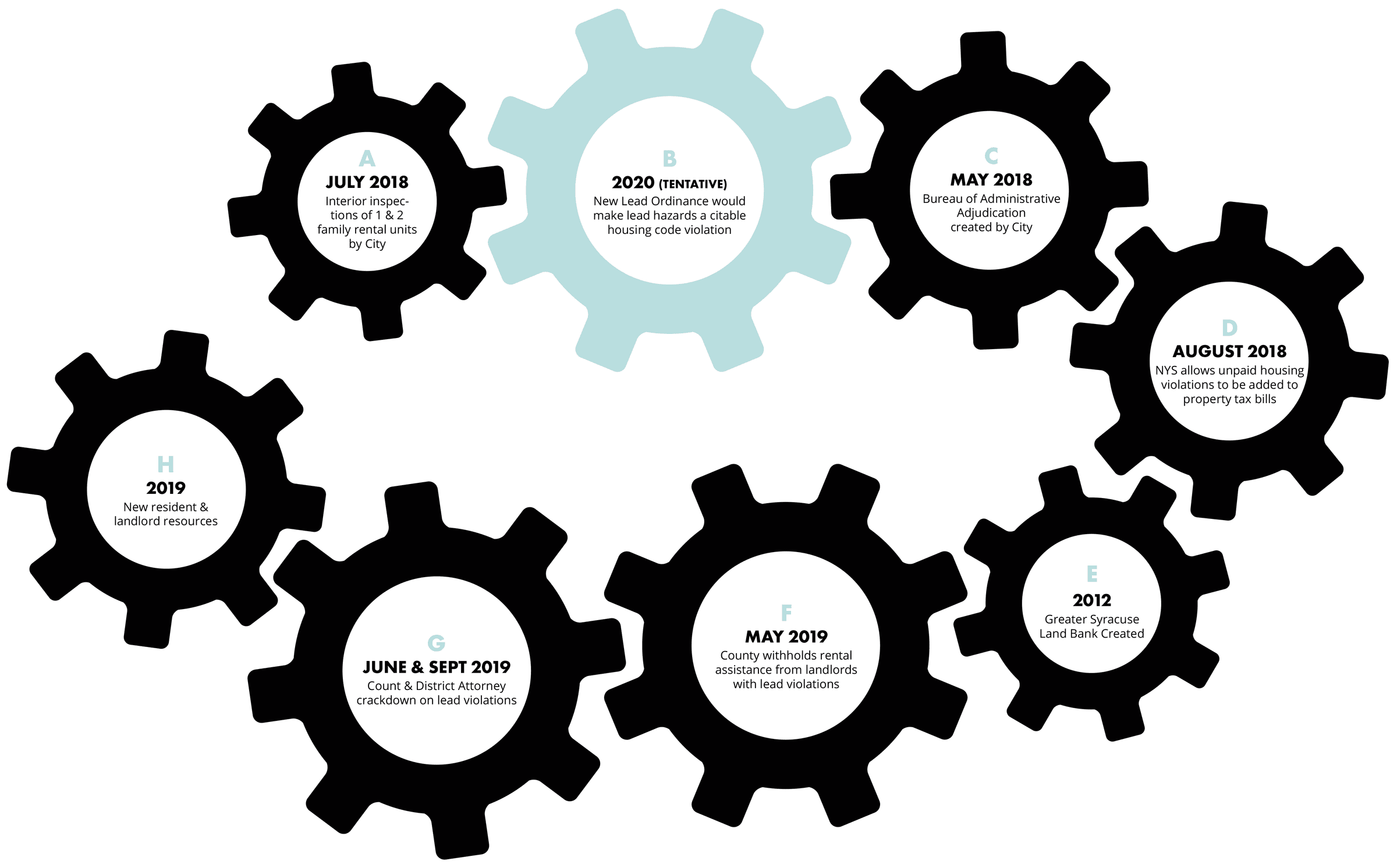
Looking at the image above, we begin at the top left with the interior inspections of rental units by the city. Apartments are required to be inspected by the Division of Code Enforcement in the city’s Department of Neighborhood and Business Development. They determine whether a location meets state and local building requirements.
Historically, these inspections were only exterior and visual.1 Landlords could simply renew their membership on the city’s rental registry with a postcard, vouch for the safety of their dwelling in writing, and pay an annual fee. This procedure changed in July 2018 with the addition of required internal inspections (A) in order for a location to be placed on the rental registry. It also mandated inspections every three years. It did not, however, make the presence of lead a violation. Instead, homes can only be cited for visible chipping or peeling paint, a matter we will revisit later. (B) (Baker, 2018, Mar 26).
At about the same time, state and local policymakers worked together to create what would be later known as the city’s Bureau of Administrative Adjudication (C). This new structure fundamentally changed the character of enforcing a code violation. In the past, uncorrected housing code violations were practically unenforceable except through housing court, a long and labor intensive process. The city would have to take a landlord to court. With such a large backlog of court cases, code violations did little in the way of deterrence. The new Bureau of Administrative Adjudication changed this such that these fines would now be taken care of by an expedited city administrative process rather than in court (Magnarelli, 2018).
Furthermore, new New York State legislation signed by the governor has signaled that in the future it will likely be possible for unpaid code violations affirmed by the Bureau of Administrative Adjudication to be added to a landlord’s property tax bill (D) (Baker, 2018, Aug 1).
Unpaid tax bills themselves might be considered weak in terms of enforcement if it had not been for the creation of a land bank several years earlier (E). This entity has the staffing and capacity to accept the properties that have been seized by the city for unpaid taxes, renovate them and resell them onto the market in strategic ways that complement neighborhood and business development planning (Greater Syracuse Property Development Corporation, 2012).
To add further pressure to landlords, the Onondaga County Executive issued an order in May of 2019 (F) to have the county’s Department of Social Services withhold rent subsidies (such as housing payments) to landlords whose properties have open lead violations (Advance Media NY Editorial Board, 2019).2 The county health department is working to develop “a program providing for a lead-free certification process, including educating tenants to demand a lead-free certification as a condition of any rental agreement” (Knauss, 2019). To complement these efforts, in the fall of 2019 the District Attorney’s office began publicly cracking down on egregious landlords with open or uncorrected lead-related violations (G) (Mulder, 2019).3
The final component of this gear train, anticipated in early 2020, would be the introduction of a new city ordinance (B) that would fill a problematic gap by making the presence of lead hazards a violation of city housing code. Such an ordinance would augment the recently-added interior housing inspections with mandatory dust wipes to check for lead contaminated dust. Lead dust is a key risk. Children crawl through lead dust and paint chips. When they put their hands in their mouths, they ingest the lead dust, causing lead poisoning.
Beyond this ordinance, as a community we may still face the challenge of deploying enough staff and other resources to implement these policies. Nevertheless, there are a variety of ways to address such hurdles. For instance, the city may choose to focus its efforts on particular neighborhoods where higher than average rates of poisoning are being found among children. There is also the question of how much this will cost landlords. We are heartened by the experience in Rochester, which saw dramatic decreases in lead poisoning after instituting similar legislation (Korfmacher, 2019: 88) which only resulted in an average per-unit cost to landlords of $1,726 (Korfmacher, et. al., 2012).
Conclusion
It is clear that our community is not standing still or stuck in the past. Rather, we are steadily marching forward toward progressive systemic change in addressing lead poisoning in our children. Our progress promises to benefit not only our youth and their families but also the community as a whole, because we all pay for the long-term costs of lead exposure. The common community cost that we pay as a consequence is many times the price of remediating residences and creating safe home environments for children to thrive. For each dollar invested in lead hazard control there is a corresponding return of $17-$221 (Gould, 2009).
In the gear train image, we begin to see a system whereby: inspections are becoming more robust (and may soon include lead hazards as a code violation), enforcement of violations is becoming stronger, penalties for not fixing violations are increasing, and grounds for the eventual confiscation of property (in worst case scenarios) are set. In addition, significant new resources in the form of philanthropic funding and government grants have become available for landlords and homeowners to make lead-safe renovations to their properties (H). As a result, a robust ‘carrot and stick’ approach is being developed.
Based on our analysis, we conclude that the most prudent next step is to advocate for the passage of a new lead ordinance in Syracuse. The city government is currently undertaking a Generic Environmental Impact Study, which will inform the development of a feasible ordinance. We expect that an open comment period on this legislation will begin in early 2020. We encourage residents living inside and outside of the city to provide input during the open comment period by either attending a committee hearing or contacting their legislators. In order to be effective, such an ordinance should deem the presence of lead hazards a violation and enable the already-built infrastructure for ticketing and housing code enforcement to be fully activated.
It may not be feasible to permanently defeat a ‘wicked’ problem such as lead exposure. Nevertheless, this new infrastructure of vigilance promises to keep lead hazards in check by ensuring that we proactively identify the problem rather than wait to address the negative outcomes. This will not only lead to decreased lead poisoning rates, but also progress in the other problems that are entangled with it, such as the percentage of children that are reading at grade level, crime, and poverty itself, all of which are linked to lead exposure. A holistic infrastructure of vigilance will protect our community for decades to come.
Footnotes
- This has been the case for one and two unit rental properties (a major source of lead exposure historically). Certificates of Compliance have been historically required by New York State for rental properties with three or more units and this requires an interior inspection every three years.
- The Department of Social Services – Economic Security began withholding rents for uncorrected lead violations on a unit by unit basis in 2017, prior to the County Executive’s Order expanding this practice to cover all units in a property.
- The District Attorney’s office also charged a landlord with an unclassified misdemeanor in 2018, prior to convening a new grand jury in 2019 in connection with new cases.
References
- Advance Media NY Editorial Board. (2019, May 29). Finally, Onondaga County pressures landlords to fix lead hazards (Editorial). Syracuse.com, Retrieved from https://www.syracuse.com/opinion/2019/05/finally-onondaga-county-pressures-landlords-to-fix-lead-hazards-editorial.html
- Baker, Chris. (2018, Mar 26). After 2 years of trying, Syracuse council passes rental inspection law. Syracuse.com Retrieved from https://www.syracuse.com/news/2018/03/after_2_years_of_trying_syracuse_council_passes_rental_inspection_law.html
- Baker, Chris. (2018, Aug 1). Cuomo signs law letting Syracuse add unpaid housing violations to tax bills. Syracuse.com, Retrieved from https://www.syracuse.com/news/2018/08/cuomo_oks_law_letting_syracuse_add_unpaid_housing_violations_to_tax_bill.html
- Centers for Disease Control and Prevention. (2019, July 30). CDC National Childhood Blood Lead Surveillance Data. Retrieved from https://www.cdc.gov/nceh/lead/data/national.htm
- Gould, Elise. (2009). Childhood Lead Poisoning: Conservative Estimates of the Social and Economic Benefits of Lead Hazard Control. Environmental Health Perspectives (2009) 1162-7.
- Greater Syracuse Property Development Corporation. (2012, July 2). Launching of the Greater Syracuse Property Development Corporation. Press Release, Retrieved from http://syracuselandbank.org/wp-content/uploads/2014/03/2012-07-02-GSPDC-Press-Release.pdf
- Gump, Brooks B., Matthew Dykas, Hames A. MacKenzie, Amy K. Dumas, Bryce Hruska, Craig K. Ewart, Patrick J. Pearsons, Christopher D. Palmer, and Kestutis Bendinskas (2017). High Normal Lead and Mercury Exposures: Psychological and Behavioral Problems in Children. Environmental Research. Retrieved on 19 March 2019 from https://www.ncbi.nlm.nih.gov/pmc/articles/PMC5562507/
- Knauss, Tim. (2019, May 16). Onondaga County takes carrot-and-stick approach to remove lead from Syracuse homes. Syracuse.com, Retrieved from https://www.syracuse.com/news/2019/05/onondaga-county-takes-carrot-and-stick-approach-to-remove-lead-from-syracuse-homes.html
- Korfmacher, K. S., Ayoob, M., & Morley, R. (2012). Rochester’s lead law: evaluation of a local environmental health policy innovation. Environmental Health Perspectives, 120(2), 309–315. doi:10.1289/ehp.1103606 Retrieved from https://www.ncbi.nlm.nih.gov/pmc/articles/PMC3279433/
- Korfmacher, Katrina Smith. (2019). Bridging Silos Collaborating for Environmental Health and Justice in Urban Communities. Cambridge, Massachusetts: MIT Press.
- Lane, Sandra D. et. al. 2008. Environmental Injustice: Childhood Lead Poisoning, Teen Pregnancy, and Tobacco. Journal of Adolescent Health 42 (2008), pg. 43–49.
- Magnarelli, Tom. (2018, May 9). Syracuse Municipal Violations Bureau to take effect this summer, freeing up work in law dept. Syracuse.com, Retrieved from https://www.wrvo.org/post/syracuse-municipal-violations-bureau-take-effect-summer-reeing-work-law-dept
- Mulder, James. (2019, Jun 27). Seven Syracuse landlords charged in crackdown on lead paint scofflaws. Syracuse.com, Retrieved from https://www.syracuse.com/health/2019/06/7-syracuse-landlords-charged-in-crackdown-on-lead-paint-scofflaws.html
- National Center for Healthy Housing. (2018, September). New York Healthy Housing Fact Sheet. Retrieved from https://nchh.org/resource-library/fact-sheet_state-healthy-housing_2018_ny.pdf
- Pasquale, Stephanie R. and Tifft, Jennifer. (2019, November 21). “What Will It Take To Alleviate The Urban Housing Crisis?” Department Of Neighborhood & Business Development, City of Syracuse.
- Rittel Horst, Webber Melvin. Dilemmas in a general theory of planning. Policy Sciences. 1973, vol. 4 (pg. 155-69).
- Wahl, Daniel Christian. (2017). “Facing Complexity: Wicked Design Problems.” Age of Awareness. Apr 29, 2017, Accessed online June 21, 2019 from https://medium.com/age-of-awareness/facing-complexity-wicked-design-problems-ee8c71618966




